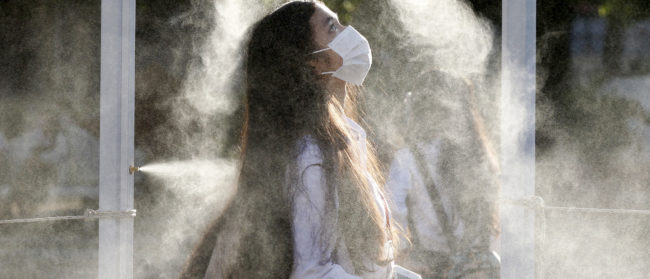[Photos] Bird’s-eye view: Aerial photos of 1953 Indochina
Post-WWI, aerial photography became central to French rule over Indochina as the colonial administration charted remote corners of the region. Here, images taken by a French air force pilot show the empire's dying days, providing a bird’s-eye view of Cambodia and Vietnam
![[Photos] Bird’s-eye view: Aerial photos of 1953 Indochina](https://southeastasiaglobe.com/wp-content/uploads/2021/01/22d80107.jpeg)
Alastair McCready is the Lead Editor at Southeast Asia Globe. He regularly posts about Southeast Asian affairs and history on his Twitter account.
In a speech given in 1920, Brigadier-General Alfred Guyomar passionately extolled the benefits of aerial photography for the furtherment of France’s colonial empire in Indochina.
Guyomar believed that map making for the public, military and geographers, as well as scouting for new railroads and highways, would be just some of the functions allowed by aerial photography that would grease the wheels of the colonial machine.
Later printed as a brochure, Aviation in Indochina: Its Means, Its Goals, Its Needs, by newspaper Le Temps d’Asie in then-Saigon, he was recorded as saying aerial photography would act as “a valued and devoted colleague of Indochinese surveyors”.
The timing of his speech, just two years after the end of the First World War, was no accident. WWI had become the first major conflict in which aircrafts were central to the war effort on both sides, with aerial photography and reconnaissance missions an essential tool in winning the war for the Allies – France among them.


Considering the contribution – both real and perceived – of aerial photography to military triumph in World War I it is no wonder that the airplane became central to so many developments in art, science, and social sciences in the 1920s and 1930s






“Considering the contribution – both real and perceived – of aerial photography to military triumph in World War I,” writes historian Jeane Haffner in book The View from Above: The Science of Social Space, “it is no wonder that the airplane became central to so many developments in art, science, and social sciences in the 1920s and 1930s.”
This trend was no less true in French Indochina, as colonial administrators heeded the calls of Guyomar and began employing aerial photography to expand and cement their subjugation of populations in the remote corners of the Indochinese colonies during the interwar years. The practice assisted with mapping, real estate surveys, and crucially in terms of revenue, tax collection, as previously uncharted – and therefore untaxed – populations were surveyed from the air.
As one French engineer, A. Michel, said in November 1936 of two valleys in what was then Tonkin, today’s northern Vietnam: “The topographic study of these sites would be carried out quite rapidly and in favourable terms by the use of aerial photography”.
While the heyday of its use proved to be the 1920s and 30s, the deployment of aerial photography by the colonial administration would continue into the dying days of the French empire in Southeast Asia – as these images provided by Fabrice Moussus to the Globe show.




Taken by Fabrice’s father Francois-Xavier Moussus sometime in 1953, they depict Cambodia just prior to independence in November that year, and Vietnam as the First Indochina War neared its climax in 1954. Among the scenes captured by Moussus – a pilot in the French Air Force who served in Indochina from 1951 to 1954 – are Phnom Penh’s Central Market and Angkor Wat in Cambodia, as well as Ha Long Bay and Norodom Palace in Vietnam.
“Sadly I never asked him many questions about his time in Indochina, but I believe he was based in Tourane, which became Da Nang,” Fabrice recalled of his father.
“He flew reconnaissance flights. The black and white photos were taken with an infra-red filter so they were not ‘tourist’ photos. As you can see in the few photos I have, being in the French Air Force was very different from the French forces fighting in the jungles.”
All images were taken by Francois-Xavier Moussus and provided to the Globe by Fabrice Moussus with the help of Jim Laurie.

